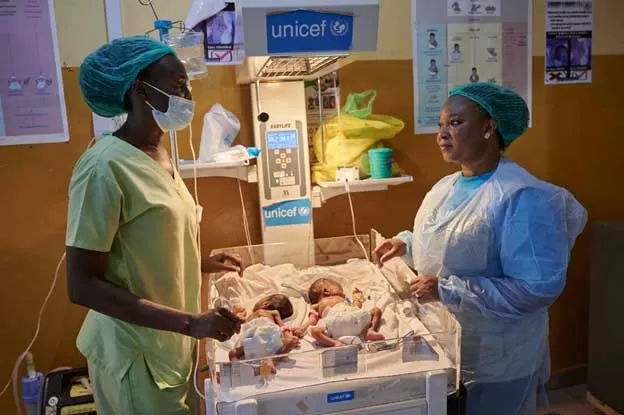Despite significant progress in reducing child mortality and stillbirths since 2000, a new report by the United Nations Inter-agency Group for Child Mortality Estimation (UN IGME) has revealed that millions of children around the world are still at risk due to unequal and limited access to basic services.
Released on March 24, the report highlights the alarming reality that despite global efforts to improve child health, the most vulnerable and marginalized children continue to face barriers in accessing essential services such as healthcare, education, and nutrition. This not only puts their lives at risk but also hinders their overall development and future prospects.
According to the report, the number of child deaths has significantly decreased from 9.9 million in 2000 to 5.2 million in 2019. This is a remarkable achievement and a testament to the efforts of governments, organizations, and individuals working towards improving child health. However, the report also highlights the stark disparities in child mortality rates across different regions and within countries.
Sub-Saharan Africa continues to have the highest child mortality rate, with 1 in every 13 children dying before their fifth birthday. This is more than 15 times higher than the child mortality rate in high-income countries. In addition, the report reveals that children from the poorest households are twice as likely to die before the age of five compared to those from the wealthiest households.
The report also sheds light on the issue of stillbirths, which are often overlooked in discussions about child mortality. It is estimated that 2.4 million babies are stillborn every year, with the majority occurring in low- and middle-income countries. This is a devastating loss for families and communities, and it is often preventable with access to quality maternal and newborn care.
The UN IGME report emphasizes the urgent need to address the underlying causes of these disparities and ensure that all children have equal access to basic services. This includes investing in healthcare systems, improving access to clean water and sanitation, and addressing social and economic inequalities.
Investing in child health not only saves lives but also has a ripple effect on society. Healthy children are more likely to attend school, learn better, and become productive members of society. This, in turn, contributes to economic growth and poverty reduction.
The report also highlights the impact of the COVID-19 pandemic on child mortality and access to essential services. The disruption of healthcare systems and the economic downturn caused by the pandemic have further exacerbated existing inequalities and put more children at risk. It is crucial for governments and organizations to prioritize child health and ensure that children are not left behind in the recovery efforts.
The UN IGME report serves as a wake-up call for the global community to take urgent action towards achieving the Sustainable Development Goal of ending preventable child deaths by 2030. This requires a coordinated effort from governments, civil society, and the private sector to address the root causes of child mortality and ensure that every child has the opportunity to survive and thrive.
As individuals, we can also play a role in supporting child health by advocating for policies and programs that prioritize children’s well-being, donating to organizations working towards improving child health, and raising awareness about the issue.
In conclusion, while the progress made in reducing child mortality and stillbirths is commendable, the UN IGME report reminds us that there is still a long way to go in ensuring that all children have an equal chance at a healthy and prosperous future. Let us all join hands and work towards a world where no child is left behind.



